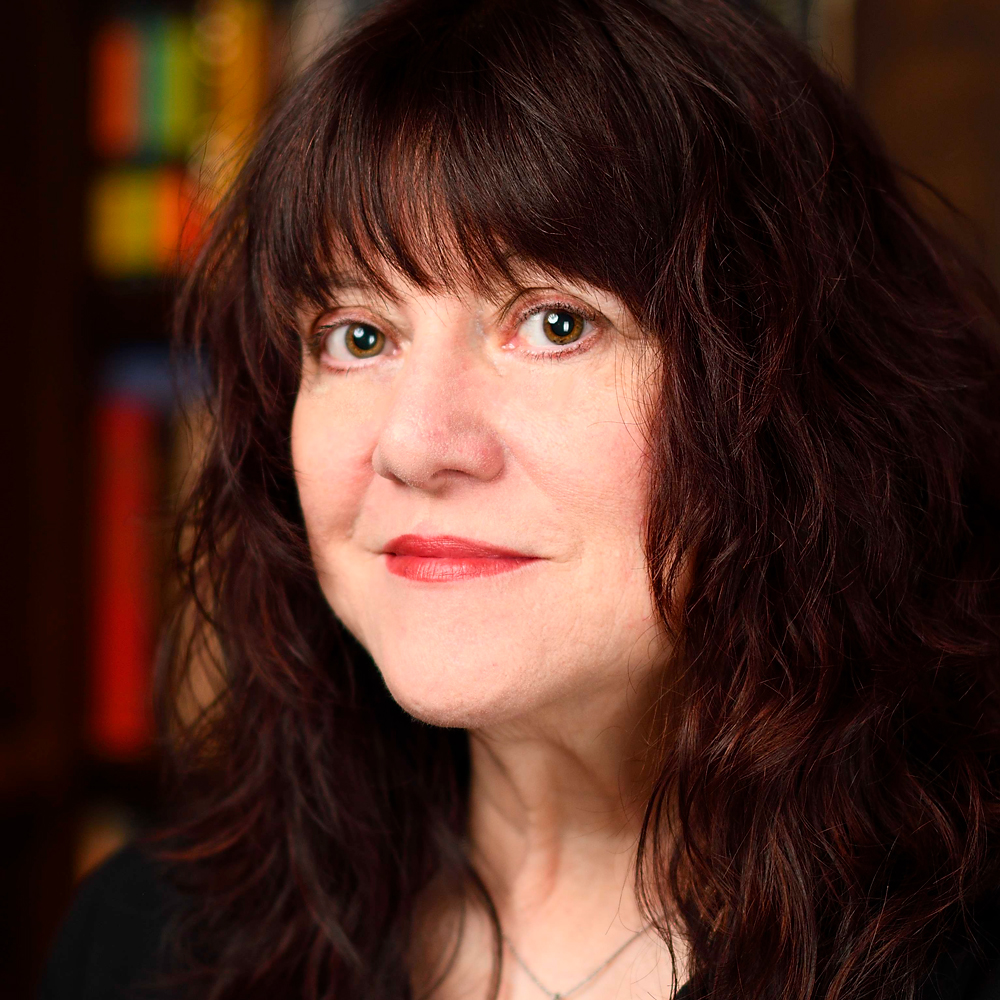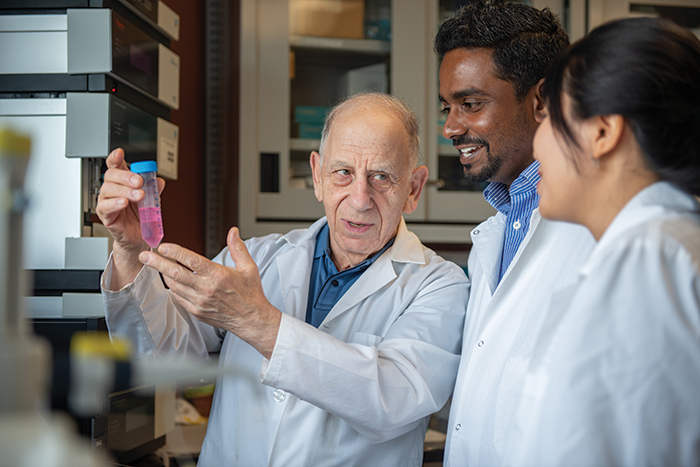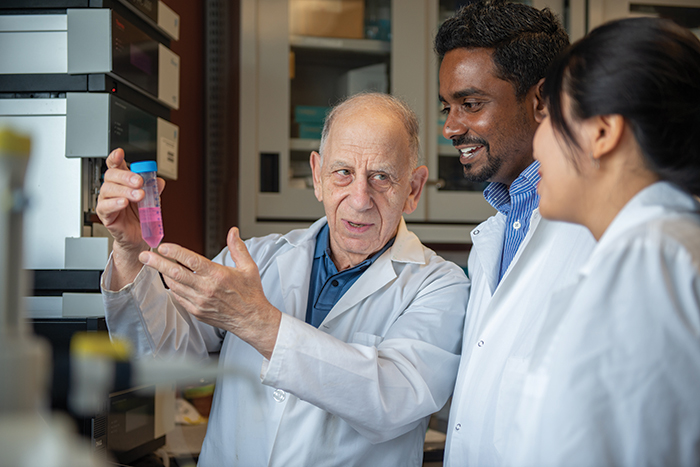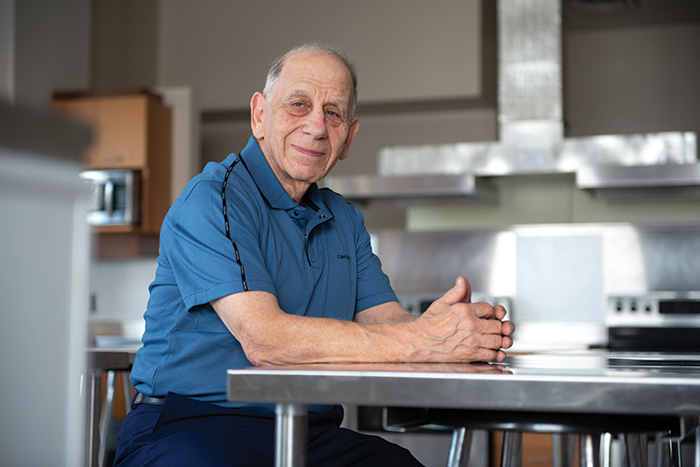
Good Flow
University of Manitoba’s Michael Eskin, the recipient of IFT’s 2022 Lifetime Achievement Award in Honor of Nicolas Appert, talks about 55 years of edible oil research, the development of canola oil, and his side gig as a food science rap artist.
Article Content
One of the highest honors a rap music artist can bestow on another is to impart the compliment, “That’s a good flow.” And in rap, achieving that smooth rhythm of tongue-twisting rhymes over a staccato-style beat is as much a science as it is an art form.
Al though University of Manitoba professor Michael Eskin is best known for his work in edible oils and his key role in the development of canola oil, he’s also achieved notoriety in certain circles as a rapper with good flow, oxygenated by a laser-sharp lipid science lexicon. The noted biochemist, now in his 55th year of teaching and research in the university’s Department of Food and Human Nutritional Sciences, jokes that a shaky start in life may have sparked his upbeat-but-pragmatic outlook.
“My twin weighed two-and-a-half pounds and I weighed two and three-quarter pounds [at birth]. I came out a mess, and I spent my first six weeks of life in an oxygen tent. And you can imagine, in those days, 1941, they weren’t that well controlled. So, you’ve got to bear in mind that whatever my personality is, it has been impacted by that oxygen,” Eskin says, flashing his trademark smile.
“So, in that sense, I’ve focused where my strengths are and, in many ways, I’m fairly strategic in what I do,” he adds. “However, I don’t go for the easy projects. I like challenges, no matter if it’s a scientific study or writing rap songs.”
Food Technology recently chatted with Eskin, winner of the 2022 IFT Lifetime Achievement Award in Honor of Nicolas Appert, about his long and successful career in food science and his side gig as a food science rapper.
After 55 years of food biochemistry research, your achievements are many. What would you say are your top successes?
I’ve always had my footing in canola, really, so that is the obvious answer. When I started teaching at [University of Manitoba], my colleague, the late Prof. Marion Vaisey-Genser, who was a sensory specialist, pulled me into the canola research. They were working on rapeseed, and they were converting it to something that turned out to be canola.
Now, rapeseed is not indigenous to Canada. It was brought into the country in the ‘30s by a Polish farmer in Saskatchewan. It grew well in the garden. And then the Second World War came about, and people found that the oil from rapeseed was a wonderful lubricant for marine engines, nothing like it. And, because of the U-boats and the difficulty of getting this lubricant, they had a major growing spree in Canada to provide the oil needed for merchant ships and Navy vessels, et cetera.
Then what happened? Fortunately, the war ended, and the introduction of the diesel engine essentially eliminated the use of rapeseed oil. The question then became, it grows so well in Canada, does it have any potential as an edible oil? It was very high in a fatty acid called erucic acid, and it had a smell and color. We worked with two plant breeders and nutritionists on the research and found that canola oil was wonderful in terms of functional and sensory properties. This was in the ‘70s, and the work resulted in the development of an association for canola oil producers and businesses.
At the time, we had no idea of the impact that our work developing canola would have, but the research essentially changed Canadian agriculture. Wheat was the number one Canadian crop for many years, but today canola is the number one crop in Manitoba, which isn’t even the largest grower of canola. Last year, canola oil brought in about $22 billion (CAD) into the Canadian economy, and it employs a quarter of a million people around the world. As a result of this huge impact, I have worked for many years on canola, dealing with various problems associated with it.
What types of problems have you and your colleagues solved and were any findings surprising?
During my first sabbatical, I went to the Hebrew University in Israel, and I met with Chaim Frankel, a professor from Rutgers University who was also on sabbatical. He was working on using a reagent, titanium tetrachloride, to measure inorganic peroxides and their impact on the aging of plants. I thought to myself, well, maybe this will work with organic peroxides, so I did a quick study and sure enough, it did interact. I knew that I had a method for measuring rancidity.
Now, why titanium tetrachloride? Because in geology, to detect titanium in rock, you use peroxide. So, you reverse that titanium to measure peroxides. When I came back to Canada, I experimented and found that it did not work with organic peroxide, it worked only with organic hydroperoxide, which is the first product of rancidity. I very quickly pulled together a paper on this new rancidity method and sent it to AOCS (American Oil Chemists’ Society), which they approved. But the feedback from the reviewer, as I recall, was, ‘Why on Earth would you do it on rapeseed? It’s not edible!’
That got me onto researching titanium tetrachloride, which I soon found had a lot of other uses. I improved the measurement for hydrogen peroxide where it is added to milk to kill pathogenic organisms and then removed with catalase. It is important to remove all the hydrogen peroxide so that the milk could be used for fermentation with friendly microorganisms to produce cultured products. I found that it measured phenolic compounds, as well, so I developed a method to measure phenolic compounds.
Of course, my research focus has been canola, and over the years, there were some interesting problems. For example, plant breeders spend their time modifying the fatty acid composition, including the polyunsaturated fatty acids, as food scientists want to reduce them as they oxidize very fast, causing rancidity. In looking at the minor components of canola, specifically the tocopherols, we found some fascinating results in a frying stability study of various canola, corn, sunflower, and soybean oils. Not only were most of the tocopherol levels reduced, but our study showed that they were quickly destroyed during the frying process. Of the four canola oils, the regular, the higher oleic, and low linolenic canola, were the best, with the least rate of degradation, a reduction in the half-life of tocopherols, and a slower rate of oxidation.
What’s in your current research pipeline?
One thing I’m working on now with my colleague Dr. Miyoung Suh is looking at different nutrients and the polyunsaturated fatty acid DHA that can ameliorate the effect of fetal alcohol on a fetus. Here you have a situation where the cure is obvious: don’t drink. But once you factor in the human condition, it’s much more complicated. We’re looking at the nutrients and the differences in enzymes that could reduce the impact of the alcohol in the development of fetal alcohol syndrome.
For a little more than a decade, I’ve also been working with colleagues to look at some of the antioxidant and anti-cancer properties in phenolics in canola, specifically the nutraceutical canolol, which is a very effective antioxidant that results during the extraction process. My colleague Dr. Usha Thiyam-Hollander, who sadly passed away in 2020, and I started this research because we were interested in finding greener ways to extract phenols from these canola materials and, later, in mustard oil, as well. I continue to work with Dr. Thiyam-Hollander’s graduate students in this area.
You’ve also contributed to the education of literally thousands of food scientists, both through teaching and seminal papers and textbooks, like the classic Biochemistry of Foods. What advice do you most like to share with students as they start their own lifetimes of achievement?
I’m towards the end of my career obviously, but I do teach an introductory nutrition course to about 250 students. I have a little rap that I perform at the beginning of the course. In the rap, I tell them that there are a few things you cannot control, but there are two things you can control. You can’t control your genes, you can’t control your age, but you can control your diet and you can control your fitness. I say to them, you rush into a fast-food restaurant, grab something, and consume it, but you go into a computer store, and you’ll spend hours going over which programs you want, which accessories, et cetera. Then, I ask them a simple question: Which one has the greatest impact on your life, on your well-being? I tell them, this course is not to make you experts in nutrition, but it’s to make you more educated consumers. You need to know what is in the food products you are eating.
When we talk about a healthy planet, we need to have a healthy population. There’s no point in having a healthy planet and an unhealthy population, we need a balance between both. I also try to communicate to students that they don’t need to be Olympians; they just need to have rigorous exercise and a normal diet. And I think that is the message I try to impart, that this course in nutrition, unlike any other course, is going to affect your whole life because you’re not going to stop eating. When I teach this course, I’m not teaching it as a subject, I’m teaching it as a philosophy of your life. You have to take care of yourself. This is really wellness. So, I’m quite passionate about that message.
You’re also well-recognized for using rap music to teach and communicate food science concepts. How did you get your start behind the mic?
I’ve always had a passion for music. I trained as a professional singer, and I’ve performed as a folk singer and cantor. I enjoy writing songs. I wrote a song for Sesame Street Canada, and after that, my son Joshua helped me to record a rap CD called Mostly Genesis with a Little Exodus for children with disabilities. The songs were based on the Old Testament. One of the raps from that CD got the attention of the university, and they made a video for YouTube that got a lot of press. It was quite a hit.
As far as the food science raps go, in 2012 I was asked by the American Oil Chemists Society to present a poster on lipids for the Education Section at the AOCS conference. I didn’t’ want to do a standard thing and I wanted to have a little fun, so I prepared the poster in the form of a rap. That was “Lipids Get a Bad Rap: It Isn’t Fair,” and my son Ezra put it to music. The staff at AOCS made a video of me performing it and Ezra put it on YouTube. That’s really how I got my start with the raps.
Since then, AOCS has asked me to do other raps at their conferences. I’ve got two other fats and oils related raps on YouTube, “Fatty Acids: The Good, The Bad, and The Ugly” and “The Fat-Soluble Vitamin Rap.” I’ve had colleagues and friends from all over the world translate these raps for use in courses and nutrition centers, most notably in Russian for the Lomonosov Moscow State University and in Spanish for a colleague who uses the lipid raps in a college class in Buenos Aires.
Do you have any new music in the pipeline?
The pandemic delayed my latest rap video, “The Protein Rap,” but I used the time to revise the lyrics and the music, and to finalize the poster. I hope to complete the video and [post it] to YouTube this fall. It starts with the lines, “Protein ain’t a professional team, but a major macronutrient, with 22 amino acids joined by peptide bonds that keep us healthy, and resilient.” I also really like the lines, “Hemoglobin, the blood protein, distributes oxygen everywhere. Without it, Hollywood could never make those vampire movies that really scare.” It’s come along very well, and I’m looking forward to sharing it.
That rap has good flow for sure. Do you have any favorite lyrics?
Usually if someone retires or if I want to have a little fun with my nutritionist and food science colleagues, I like to perform “The Omelet Soliloquy: To Eat or Not to Eat.” I’ll just do a couple lines of this that I especially like. “To eat or not to eat, that is the question. Whether it is nobler in the mind to suffer the yoke of this gelatinized morsel, or merely to imbibe its succulent contents. No more to say they are cholesterol elevators, the heartache and the thousand natural shocks experienced by the mother hen during its laying, for in that laying, another egg is born, which we may crack and fry with joy, then give pause and smell its sweet odor. Devoutly, the hens do sleep. Yea, to sleep, perchance to dream. Yea, there’s the rub. For in that sleep, another egg will dream. So it goes.”
My favorite lyric, though, is this: “I'm reviewing the situation on how every new nutritional fad is spread, by those nuts who love fitness and never ever seem to go to bed. You won’t see them at Claridge’s, they’re too busy chewing cabbages, doing aerobics day and night in outfits that are far too tight. They only drink more carrot juice, and if you stray, you’re in a noose. I think I’d better think it out again.”
When you look back over your career and accomplishments, what makes you happiest?
I have to say, first, I landed in a wonderful environment at University of Manitoba. I was extraordinarily lucky with colleagues, and I have been very fortunate to work with lots of outstanding people. I personally thank them now for making me look good! And so, I would say being in an environment that’s very supportive has made me happy.
Now, my wife, Nella, will say I’m very competitive, but I’m competitive in the sense that I like to help people do well. I like to collaborate with people. As one person, you’re limited in what you can do. I know my limitations and I may not talk about them too much, but I also know that I can work together with others to accomplish big things. The joke is that when I see somebody who I like and think has potential, we end up doing a book together. And that’s true!
What does the IFT Lifetime Achievement Award mean to you?
It’s like the icing on the cake, [because] it’s an award that looks at your total career. Previously, I received the IFT Stephen S. Chang Award and I was named an IFT Fellow, so this one, as I said, is the icing on the cake. When I look at the previous awardees, it’s a very humbling group to be in and I think my parents would be shocked.
Vital Statistics: Michael Eskin
Credentials:BSc (Hons), biochemistry and PhD, physiological chemistry, University of Birmingham
Career Highlights: Pioneer canola developer and researcher, helping to make canola oil the third largest oilseed crop in the world; author of Biochemistry of Foods, which has become a classic and standard reference for nearly all food science programs in the U.S.; science innovator on the composition, functional and health properties of yellow mustard gum
Noteworthy: Published over 250 research articles, book chapters, monographs, and abstracts, and 17 books, including two on canola; conducted extensive research on enzymes and gums; developed several colorimetric methods, including one for phytate that is still used worldwide
Recognition: Institute of Food Technologists: Lifetime Achievement Award in Honor of Nicolas Appert, 2022; Fellow, 2015; and Stephen S. Chang Award, 2012; American Oil Chemists’ Society: Supelco Research Award, 2020; Stephen S. Chang Award, 2018; Herbert J. Dutton Award, 2017; and Alton S. Bailey Medal, 2013; Professor of the Year, Faculty of Agricultural and Food Sciences, 2017; Order of Canada, 2016; Order of Manitoba, 2021
Patents: Extraction process and use of yellow mustard gum, Canada, 1999 and U.S., 2001; Canolol production method, U.S. (provisional), 2019











